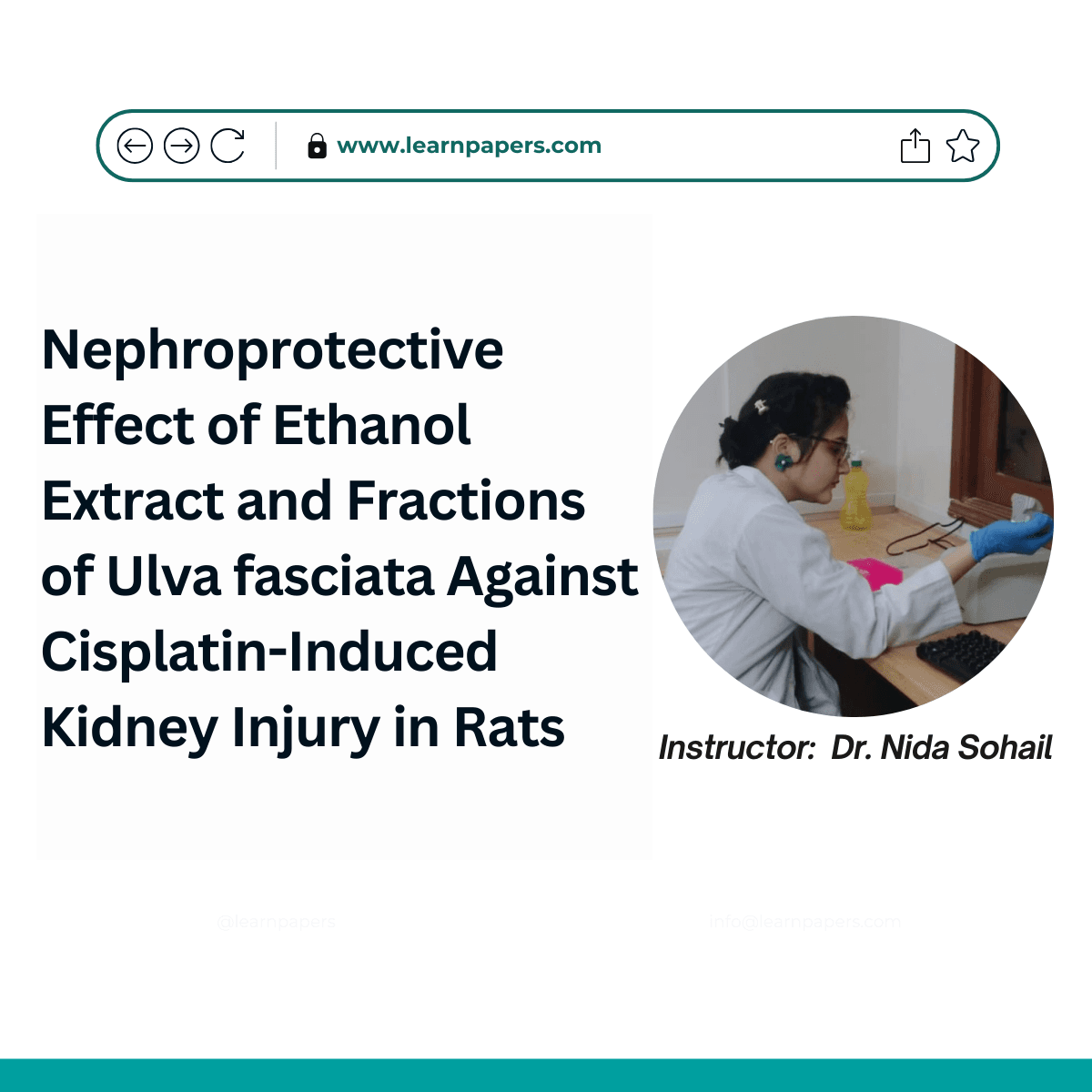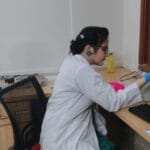Nephroprotective Effect of Ethanol Extract and Fractions of Ulva fasciata Against Cisplatin-Induced Kidney Injury in Rats

About Course
This course explores the research surrounding the nephroprotective properties of Ulva fasciata, a green seaweed, in mitigating cisplatin-induced kidney injury in rats. The course focuses on understanding the methodologies, experimental design, and outcomes associated with using ethanol extract and its solvent fractions to treat nephrotoxicity caused by cisplatin. Learners will gain insights into experimental protocols, biochemical analysis, oxidative stress markers, and the potential therapeutic uses of seaweed in nephrology.
Abstract:
Cisplatin is widely used in anticancer therapy, but a substantial percentage of patients who receive the therapeutic dose of cisplatin develop nephrotoxicity. Hepatotoxicity may also develop after a single dose or low repeated doses of cisplatin. Ulva fasciata is an edible seaweed, commonly known as sea lettuce, that has also been shown to have various biological activities. In this study, ethanol extract and its solvent fractions (n-hexane and chloroform) of U. fasciata were given (orally) to different groups of rats for 10 days. Injury to the kidney was induced by administering cisplatin, intraperitoneally (i.p.) to rats at a dose of 7 mg/kg body weight (b.w.) dissolved in 1 mL saline, on the 5th day of the experiment. On the 10th day, rats were sacrificed, and kidney parameters (creatinine, urea, and blood urea nitrogen (BUN)) and electrolyte balance (Ca++, Mg++, K+, and Na+) in serum were determined. Oxidative stress markers (glutathione (GSH), catalase (CAT), and malondialdehyde (MDA)), and inflammatory cytokines (tumor necrosis factor (TNF α) and interleukin (IL-6)) were determined in kidney tissues. Histological examination of the kidney was also performed to examine changes in kidney tissues. Cisplatin caused adverse effects on blood parameters, antioxidants, and inflammatory markers with severe renal tubular injury in kidney tissues. Ethanol extract of U. fasciata and its fractions effectively improved these disorders and diminished renal dysfunction. However, ethanol extract was found more effective in attenuating the adverse effects of cisplatin than its fractions. The n-hexane-soluble fraction that was subjected to GC-FID and GC-MS analysis revealed the presence of several compounds, some of which are new from this source. It could be concluded that U. fasciata possesses nephroprotective effects and can attenuate cisplatin-induced renal dysfunction. Since U. fasciata is an edible seaweed, it may be used as a dietary supplement.
Course Content
Module 1: Introduction to Nephrotoxicity and Cisplatin
Module 2: Role of Marine Plants in Medicine
Module 3: Experimental Design and Methods
Module 4: Biochemical Assessment of Kidney Injury
Module 5: Phytochemical Analysis and GC-MS Profiling
Module 6: Histopathological Evaluation
Module 7: Results and Discussion
Module 8: Future Applications and Potential for Human Use
Student Ratings & Reviews

